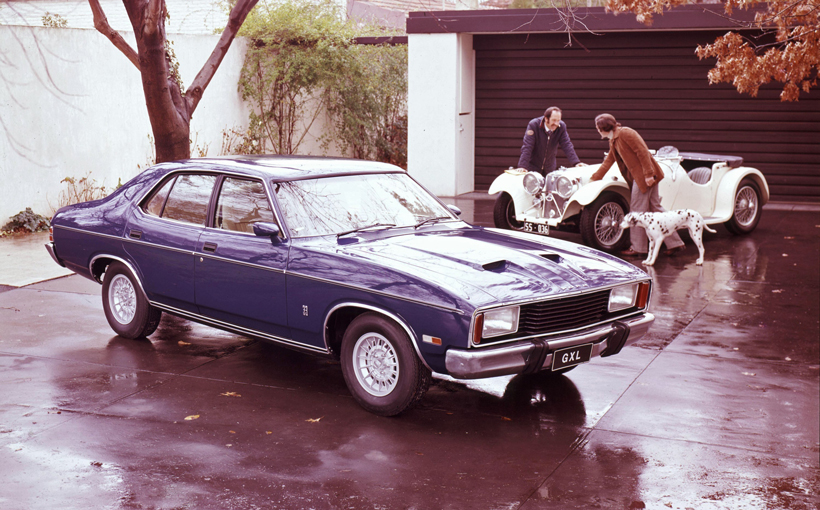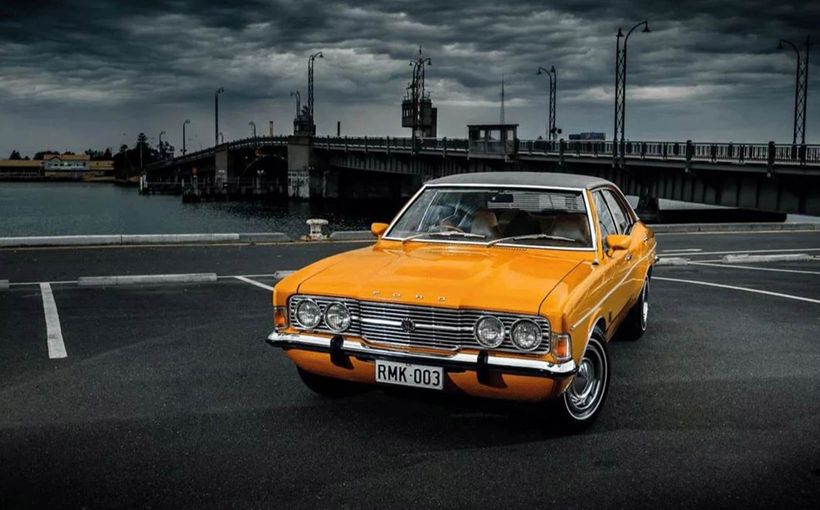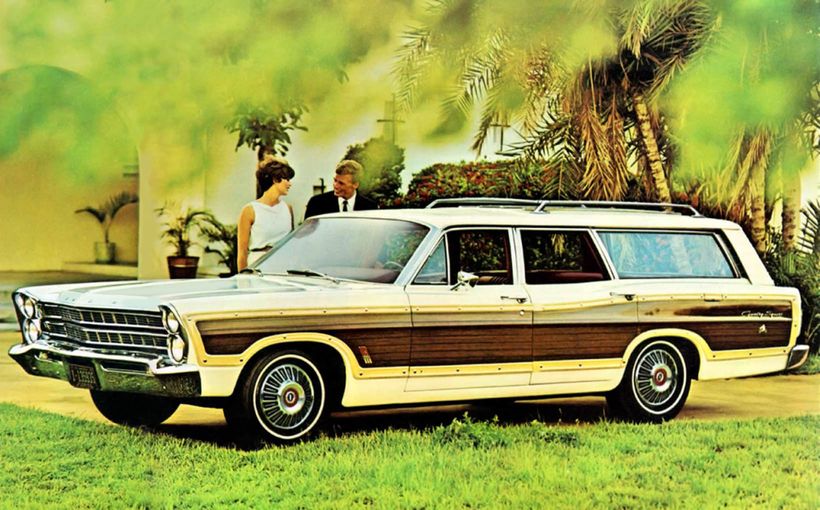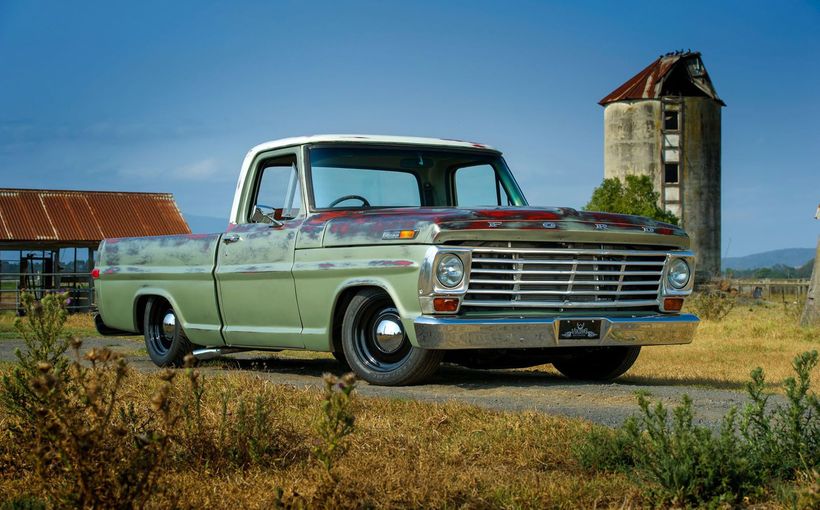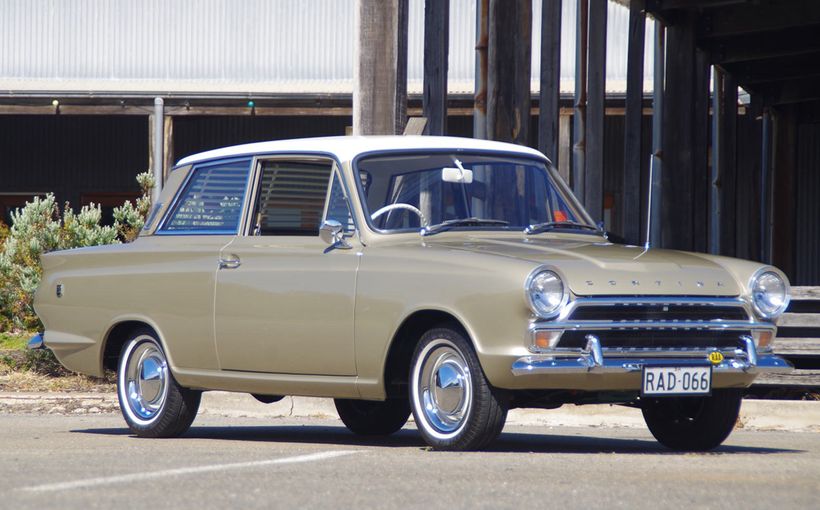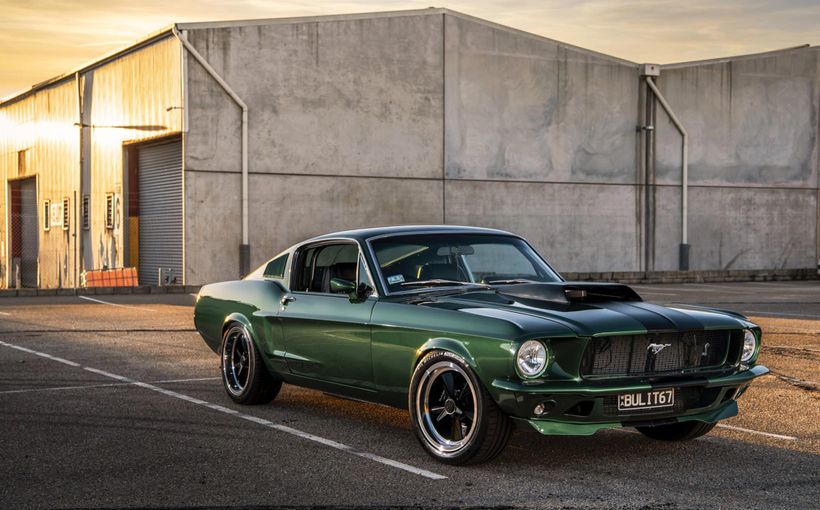The XC Falcon: niche work if you can get it
In July 1976, timed to coincide with the introduction of the ADR27A emissions legislation, Ford Australia released its second facelift on the 1972 XA, the XC. It was a demanding era for the local manufacturers and it was the team at Campbellfield that showed the most initiative. The XC Falcon represented a bolder engineering response to ADR27A than the HX Holden, a ‘pollution special’ if ever there was one.
Ford Australia’s engineers designed new crossflow cylinder heads for its six-cylinder engines. Although these revised sixes offered little, if any, performance gain over the previous ‘dirty’ engines, they did give the Falcon a still greater lead over Holden when it came to six-cylinder power.
By contrast, GM-H took a more conservative and bean counter-focused approach. The 173 cubic-inch and 202 cubic-inch sixes were in the venerable category. When additional plumbing was added to enable these underpowered units to pass the difficult Australian Design Rule, which required a dramatically reduced level of exhaust emissions, they lost smoothness, tractability and performance was noticeably inferior – down some nine per cent.
When Ford Australia introduced the XA Falcon more than half a year after the HQ Holden, one of the model’s advantages was better performance across the engine range. Holden’s entry level unit was the 173 cubic-inch six, while the 202 (the old 186 bored out to its practicable maximum, and harsher as a consequence) was the popular choice. Then there were the 253, 308 and 350 V8s. Ford’s lo-po engine was the 200, which was almost a match for the 202. Then came the 250 and the new 250 Special (with dual-throat ‘twin venturi’ carburettor). There were two V8s, the 302 and 351. But the 250 six offered similar performance to Holden’s smallest V8s and the Special had a marked edge. Ford’s 302 rivalled the 308, while the 351 had an edge over the (Chevrolet) 350.
That was in 1972. Four years later, the Falcon enjoyed an enhanced advantage in the six-cylinder stakes.
When it came to the two V8 engines, Ford Australia showed further initiative, albeit somewhat belatedly. Finally, the 4.9-litre unit got the four-barrel carburettor it had been needing for years. This didn’t stop more enthusiastic and discerning drivers from opting for the famous old 351. (I was the Graduate Training Co-ordinator at Ford Australia in 1979 and I was struck by how what seemed like the majority of upper level executives chose the 5.8-litre engine – standard in the LTD –for their Fairlanes. The argument was that fuel economy was no better with the 4.9, so why not enjoy the extra performance?)

So, with the XC Falcons and Fairmonts, the ZH Fairlane and the P6 LTD, there were some significant advances. By this time it was obvious that Ford Australia had done an even better job than GM-H of maximising the potential of every new model. As well as the expected sedans, wagons, utes, panel vans, hardtops and long-wheelbase limousines, the Ford marketing people wanted more.

In mid-1973, late in the life of the XA, the LTD and Landau joined the range. The former was built on a longer wheelbase than the Fairlane, giving Ford Oz three different wheelbases. As for the short-lived Landau (which disappeared when the XC arrived), it was a luxury interpretation of the Falcon GT Hardtop.
As Shannons Club Racing Garage editor Mark Oastler has observed, it was the Landau which enabled political mastermind Howard Marsden to convince CAMS to allow the Falcon GT to be equipped with rear disc brakes for Bathurst, Marsden having produced homologation papers to show that the Landau was a variant of the Falcon GT. This was all very clever stuff, which looks even more so as the years race past.
There was no Landau but those marketing dudes saw further niches to be filled. Arch-rival GM-H had responded to the LTD challenge by releasing its Statesman Caprice. But in some ways this was a case of history repeating itself. Ford Oz released its first Falcon-based Fairlane in 1967. Holden’s cynical 1968 answer came in the unlovely guise of the Brougham built on the same wheelbase as the Kingswood/Premier but with a longer boot tacked on. The Caprice was a more impressive effort but it still shared its wheelbase with the less expensive Statesman De Ville, while what a true limo required was a stretch in wheelbase.
While the GM-H marketing executives tried to persuade prospective buyers that the Caprice was a genuine rival for the LTD, their counterparts at Ford outsmarted them by introducing a plusher variant of the Fairlane to rival the Caprice on equipment while matching it in size and beating it on price. This was the Marquis. The Marquis was only needed from 12 May 1976 – the ZH Fairlane preceding the XC to market by a little more than six weeks – to 1979, because with the XD/ZJ/FC models, Ford Australia dropped the unique longer wheelbase for the LTD, which took away some of its prestige advantage over the Fairlane. (By that time though the dominance of the Fairlane/LTD over their Holden rivals was huge, helped by the hire car and Government fleet markets).
Meanwhile the P6 LTD with its ostentatious ‘Rolls-Royce’ grille and standard leather upholstery was the most imposing of all locally manufactured cars. It may be hard now to remember that the P5/P6 models were built on a wheelbase five inches longer than the Fairlane and Falcon wagon. The rarely mentioned downsize of this significant stretch is that you could actually feel some body twist over difficult surfaces: these LTDs were behemoths.
The P6 LTD lost the retractable headlights and the Thunderbird-style strip rear lights. But with its squared-off rear styling and that prominent grille, it had extra road presence.

The Marquis gave Ford Australia its first new market niche with XC. But the second additional variant involved a significant loss which more than offset the gain. This was a new variant of the Fairmont, badged GXL. It came with a choice of three engines. There was the 4.1-litre sixpack, the 4.9-litre V8 and, if the buyer ticked the ‘GT Power Pak’ option, the 5.8-litre V8, as well as sports suspension and other GT goodies. That was all good news but the legendary Falcon GT had been consigned to history.
It is true that the GXL with the GT Power Pak option was effectively an XC GT by another name, but the loss of the old name still mattered. By 1976 the pendulum towards high performance cars – and especially the promotion of such vehicles – was swinging the other way. The GXL represented a brilliant marketing solution and the car was less likely to ring alarm bells in insurance company offerings than ‘GT’, or to stimulate members of the Highway Patrol to giving chase.
In its standard guise the six-cylinder GXL was a Fairmont with extra goodies such as four-wheel disc brakes, alloy wheels and sports instrumentation.
While the Ford Australia marketing team applied gloss to a depressing era, the times remained depressing for lovers of hot cars. The GT Falcons had followed their HO flagships off the agenda; the horsepower race from the XR Falcon through the five-plus years to the demise of the Phase IV GTHO was effectively reversed over the next four.
Strict anti-pollution legislation saw most cars take a power cut. There were serious concerns about the ready availability and price of petrol. The glory days of the late 1960s and early 1970s began to seem like an increasingly distant memory.
This was the context of the XC Falcon and, frankly, it was the battleground on which Ford Australia’s canny executives secured a dominance over their Holden opponents that would last until the introduction of the VB Commodore and be regained shortly afterwards.
The Falcon had advantages in styling as well. Market research in the very early 1970s showed that buyers of the traditional Australian sedans and wagons preferred squarer lines with a more aggressive theme. The XB Falcon represented the first answer to this challenge. The XA’s subtle little bullet-style taillights made way for chunky wraparound rectangular lights. The XB also got a more purposeful grille.
By comparison, the HJ Holden just looked hamfisted. The beauty of its predecessor was sacrificed on this altar of perceived machismo. The HX was a sideways step.
Ford Australia’s designers succeeded in making the XC look quite different from its two predecessors. By the mid-‘70s the so-called ‘Coke bottle hip’ styling theme, first seen locally on the XR Falcon in 1966, was beginning to look dated. It was a priority of the XC design brief to flatten out the hipline, mainly to yield a new look but also to improve visibility. By using the rear doors of the Fairlane, the stylists were able to give the XC a new profile. Not everyone would agree that it was more elegant and, indeed, senior stylist Brian Rossi has said that he thinks the XB represents the ultimate expression of the theme initiated with the XA. The point was though that the XC looked new and different, which really mattered in down-in-the-doldrums 1976, the winter of 1976 at that!
The XC also got a new, more rectangular-looking grille, deeper bumpers and different taillights. Single round headlights were used on the Falcon, while Fairmonts got rectangular units. Circular gauges in a new instrument panel gave the interior a contemporary feel. This was another selling point compared with the HX.
With the fairness of hindsight, it is evident that the HX Holden was destined to a very short run before being replaced by the enormously more impressive HZ (which still had to battle on with the same dull engines, as, indeed, did the VB Commodore!). The XB had been on sale for 33 months and the XC had to run for 32. Interestingly, in the mid-1970s the local six-cylinder and V8 cars were beginning to lose market share. While 211,306 XBs were sold in those 33 months, just 171,082 XCs found purchasers.
The last ever Falcon Hardtop was not introduced until December 1976. By that stage GM-H had introduced its swansong LE Monaro.
General Motors-Holden’s was on the cusp of major change under new management. In October 1977 the HZ range replaced the unlovely and unloved HX. This model was as poised and driver-focused as its predecessor had been the opposite. In April 1978 Ford Australia released its so-called ‘XC1/2’, the XC ‘Update’. Significantly, the Ford Blue Oval badge was placed prominently on the new car, front and rear. Steel-belted radial tyres, firmer suspension settings and a rear anti-roll bar were intended to sharpen up the XC’s dynamics to equal the HZ’s with its brilliantly named ‘Radial Tuned Suspension’.
Holden had promoted the HZ’s crisp handling by having a test driver slalom the car through a set of witches hats and then driving rival cars through the same exercise. Ford Australia did better with its aggressive marketing of the Falcon, as it consistently did from the XA days of The Great Australian Road Car. Fred Gibson drove a standard Falcon 500 in a special slalom test at Ford Australia’s proving ground. Racing drivers literally stood in the place of witches hats with their backs turned to the car travelling at 90-plus km/h. Allan Moffat, Colin Bond, John Goss, Dick Johnson, Ron Dickson and Murray Carter were the brave men who performed in an advertisement that workplace health and safety practices would not allow this century.
Improved as the Update was (from a higher starting point), the Falcon still didn’t handle as crisply as the HZ. But it hardly mattered. By this stage the Falcon was effortlessly outselling its long-time rival.
The ‘Update’ applied across the range of XC Falcons and Fairmonts and ZH Fairlanes. With leather trim now standard on the Marquis, that model came closer to equalling the still pricier Caprice. The 4.9-litre engine received minor improvements for a gain in performance.
Finally, the now legendary limited edition Cobra Hardtop went on sale in July with all but the first of the original 200 getting the 5.8-litre engine and the second equal-sized batch the 4.9, except for build number 351 which got the matching engine. Option 97 with the racing homologation components including twin thermo fans, engine oil cooler, bonnet hump and racing seats was fitted to build numbers two to 31. The Cobra’s claim to iconic status was much helped by Moffat’s 1978 racer which was dressed as a Cobra. Compare this send-off for the Falcon Hardtop with the LE Monaro!
In summary, Ford Australia’s product planners did a good job with the XC, ZH and P6. Even the utes and panel vans had a sporty style, with something of a coupe feel to the ute (especially when optioned with the 5.8-litre V8 engine). The range of variants derived from the one basic design was greater than anything achieved by GM-H or Chrysler Australia and there were fewer lacklustre offerings; mostly every Ford was better than its direct competitor, certainly until the introduction of the HZ. There was a more positive approach to the challenging lower-emissions future. Although the loss of the GT variants was keenly felt, there was plenty to admire about the new range, especially from the Update variants which deservedly carried the Blue Oval badge prominently.

